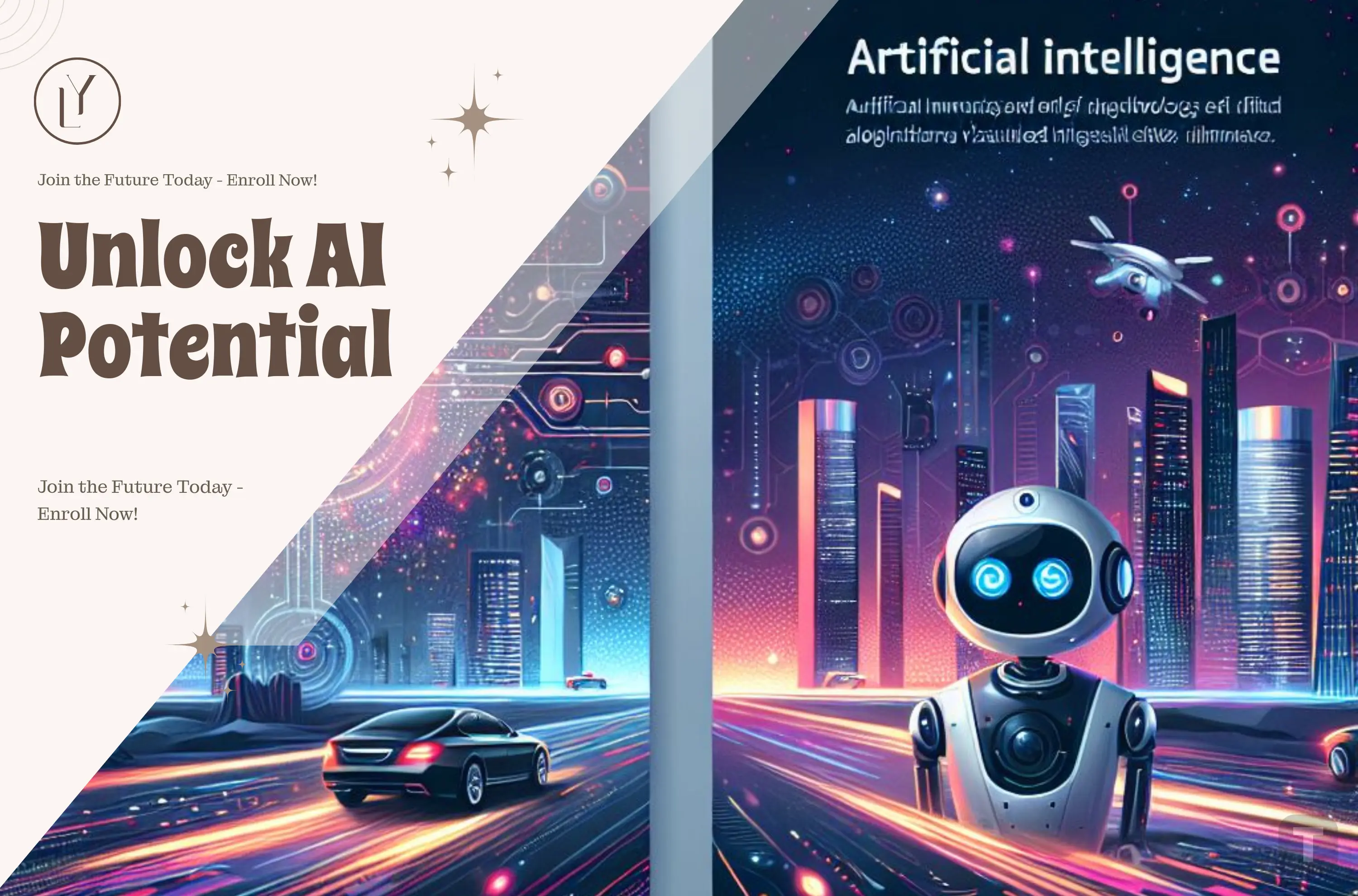
Artificial Intelligence in today’s world has become as essential as oxygen and water, making it difficult to imagine life without it. From small case studies to large-scale applications, multiple factors have contributed to the growing importance of AI, making it something truly significant and innegligible. In this blog, let’s explore the various aspects of the AI universe and discover which tools can be used in our day-to-day activities to make life easier.
Artificial Intelligence (AI) / Machine Learning (ML)
Artificial Intelligence (AI) refers to the simulation of human intelligence in machines that are programmed to think, learn, and make decisions. Machine Learning (ML) is a subset of AI that enables systems to automatically learn and improve from experience without being explicitly programmed. Together, AI and ML are transforming industries by enabling smarter decision-making, automation, and innovative solutions across various domains.
AI pioneers and influencers
Early Pioneers & Foundational Thinkers
- Alan Turing – Father of computer science; proposed the “Turing Test” for machine intelligence.
- John McCarthy – Coined the term “Artificial Intelligence”; developed Lisp programming language.
Machine Learning & Deep Learning Revolution
- Geoffrey Hinton – Godfather of Deep Learning; breakthrough in neural networks & backpropagation.
- Yann LeCun – Created convolutional neural networks (CNNs); head of AI at Meta.
Modern AI Entrepreneurs & Builders
- Demis Hassabis – Co-founder of DeepMind (AlphaGo, AlphaFold).
- Mustafa Suleyman – Co-founder of DeepMind; now CEO of Microsoft AI.
- Sam Altman – CEO of OpenAI; driving force behind ChatGPT.
- Jeff Dean – Head of Google AI; key figure in scaling deep learning.
AI Thought Leaders, Philosophers & Critics
- Ray Kurzweil – Futurist, Google AI researcher, proponent of technological singularity.
- Lex Fridman – AI researcher & podcaster popularizing AI discussions.
- Cassie Kozyrkov – Chief Decision Scientist at Google, evangelist for applied AI.
Influential AI Papers That Shaped the Field
- Attention Is All You Need (2017) – Introduced the Transformer architecture, the backbone of modern LLMs.
- BERT (2018) – Brought bidirectional context to NLP, powering search and language understanding.
- GPT (2018, v1) – Showed the power of large-scale pretraining for generative text models.
- Knowledge Distillation (2015) – Technique for transferring knowledge from large models to smaller ones.
- RLHF: Learning to Summarize with Human Feedback (2020) – Foundation for aligning LLMs with human preferences.
- Chain-of-Thought Prompting (2022) – Showed how reasoning improves when models are guided step-by-step.
- LoRA (2021) – Efficient fine-tuning method for adapting large models with minimal compute.
- Retention Is All You Need (2023) – Explores alternatives to attention for scaling efficiency.
- RLVR: Verifiable Rewards (2023) – Research on making reinforcement learning more transparent and trustworthy.
- The Illusion of Thinking (2023) – Critiques LLM reasoning, sparking debate on true AI intelligence.
The Expanding Universe of AI
Image AI
- Neural Radiance Fields (NeRF) – used by Google Maps for creating immersive 3D street views.
- Diffusion Models (DDPMs) – power tools like DALL·E and Stable Diffusion for image generation.
- Vision Transformers (ViTs) – drive image recognition in self-driving cars and medical imaging.
Voice AI
- Whisper-style processing – OpenAI’s Whisper transcribes audio across 50+ languages.
- Zero-Shot Voice Cloning – startups like Resemble AI let you clone a voice from seconds of audio.
- Neural Transducers – Google’s Pixel Voice Typing uses this for faster, low-latency speech-to-text.
NLP (Language AI)
- BERT – powers Google Search’s contextual understanding.
- Multilingual Transformers (MLMs) – enable DeepL and Meta’s No Language Left Behind for translation.
- Language-Conditioned Robotics – robots like SayCan (Google DeepMind) follow natural language commands.
- Differentiable Prompt Tuning – used to fine-tune models like GPT on domain-specific tasks with minimal data.
Video AI
- GANs for Video Synthesis – DeepFake apps for face-swapping in movies/entertainment.
- Neural Video Interpolation – YouTube’s slow-motion features for creating smooth playback.
- Cross-Modal Fusion – captioning systems that align video + audio for accessibility.
Core AI Terminologies
- Reinforcement Learning (RL, MARL) – AlphaGo and OpenAI Five learned strategy through self-play.
- Few-Shot Learning – GPT-4 can solve new problems from just a handful of examples.
- Continual Learning – Tesla’s Autopilot improves over time with new driving data.
- Transformers – foundation of ChatGPT and other LLMs.
- LoRA (Low-Rank Adaptation) – used by the AI community to fine-tune Stable Diffusion on custom art styles.
- Knowledge Distillation – used by DistilBERT to shrink big language models into lightweight versions.
AI Tools & Products
Research AI
Helping researchers explore papers, connect ideas, and accelerate discoveries.
Examples: Connected Papers, Semantic Scholar, Elicit, Litmaps.
Developer / Code AI
Boosting productivity by assisting with coding, debugging, and documentation.
Examples: Tabnine, Codeium, Replit Ghostwriter, Cursor.
Health & Wellness AI
From mental health chatbots to medical imaging, AI is transforming care.
Examples: Woebot, Tempus, Butterfly Network, Ada, Fitbit AI, Calm AI.
Image & Creative AI
Generate stunning visuals and designs in seconds.
Examples: DALL·E 3, Midjourney, Runway ML, Leonardo.ai, Canva AI, Adobe Firefly.
Voice AI
AI voices are now everywhere—from podcasts to customer support.
Examples: Krisp, Speechify, Murf, Resemble.ai, Play.ht.
Video AI
Simplifying video creation, editing, and storytelling.
Examples: Pika Labs, Wisecut, Veed, InVideo AI, Fliki.
Music AI
AI that composes, remixes, or enhances sound.
Examples: AIVA, Boomy, Mubert, Riffusion.
NLP & Text AI
Writing, summarizing, and translating at scale.
Examples: ChatGPT, Claude, DeepL, GrammarlyGO, Jasper, QuillBot, Writer AI.
Document AI
Streamlining contracts, research papers, and legal docs.
Examples: Humata AI, DoNotPay, Docugami, Kira Systems.
Business & Productivity AI
Making teams smarter and workflows faster.
Examples: Notion AI, Salesforce Einstein, Zapier AI, Otter.ai, Superhuman, ClickUp AI.
Leading AI Companies by Domain
Document AI
Revolutionizing how contracts, legal docs, and research are managed.
Examples: Luminance, Hebbia, Harvey, Clay.
Text & NLP AI
Building smarter chatbots, translation systems, and writing assistants.
Examples: OpenAI, Cohere, DeepL, Perplexity AI, You.com.
Creative AI
Pioneering AI for art, design, video, and immersive media.
Examples: Runway, Synthesia, Pika Labs, Photoroom, Inworld AI.
Health & Fitness AI
Driving breakthroughs in diagnostics, drug discovery, and wellness.
Examples: Tempus, Anthropic, Abridge, PathAI, Spring Discovery.
Business & Enterprise AI
Scaling AI for enterprise, analytics, and infrastructure.
Examples: C3.ai, Scale AI, Pinecone, Weights & Biases, Hugging Face, Palantir, LangChain, DataRobot.
Conclusion
Artificial Intelligence is no longer just a technological buzzword, it’s the driving force reshaping how we live, work, and imagine the future. From pioneering research papers and visionary thinkers to the countless tools and companies building practical applications, AI has become a truly innegligible part of our world.
Yet, as much as AI empowers us with speed, accuracy, and creativity, it also challenges us to think deeply about responsibility, ethics, and the balance between innovation and human values. The future of AI will not be defined by machines alone, but by how we, as humans, choose to harness and guide this powerful technology.
The AI ecosystem is vast and ever-expanding—making this the perfect time to explore, experiment, and adapt AI tools in our personal and professional lives. What was once a futuristic dream is now today’s reality, and tomorrow it could very well redefine what it means to be human.
Leave a comment
Your email address will not be published. Required fields are marked *









